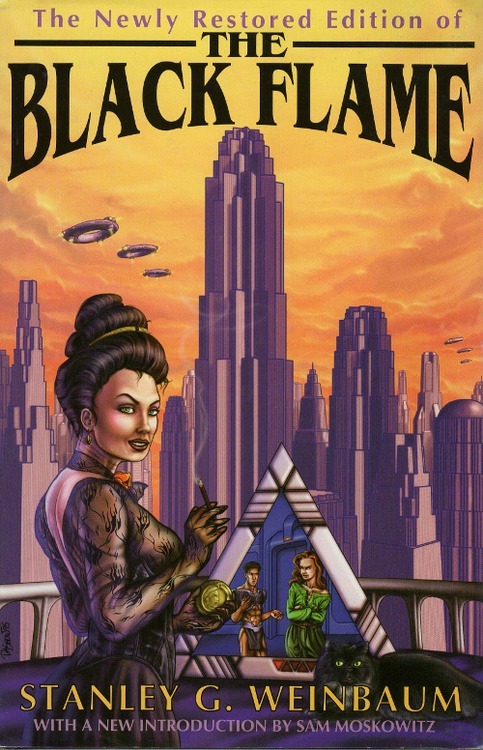THE BLACK FLAME presents intriguing ideas

Recepto Indablog reviews Stanley G. Weinbaum’s legendary tale The Black Flame, while making special mention of Tachyon restored edition.
(Translated poorly from the Spanish by Google Translate)
At the time of his death in December 1935, under his belt with a romance novel and a dozen long stories, mostly published in Wonder Stories and Astounding, which would be added many others, published posthumously in the next four years, and a couple of novels; one of them, “The Black Flame” with a haphazard publishing history.
“Black called it” actually consists of two texts, which possibly were never designed a coherent single narrative. On one side is the story “Dawn of Flame” (“Dawn of Flame”), which originally appeared in 1936 in a posthumous commemorative volume that gave title. Subsequently, in January 1939, a short novel, “The Black Flame” (“The black flame”) appeared as a highlight of the first issue of Startling Stories. In 1948, Fantasy Press them together in one volume, with editions in 1953 (Harlequin Books) and 1970 (Avon Books). It is the latter which apparently took as a starting point Labyrinth Library for the Spanish edition of 2006 on which this review is based.
The story of “The Black Flame” does not end there, however. The original text of Weinbaum, which was considered lost (after being stolen from Forrest J. Ackerman, who had obtained it at an auction), reappeared in 1995 in a volume “restored” Tachyon Publications, after being discovered a carbon copy of himself in a chest in possession of a grandson of the author. This version gets additional 18,000 words (about fifty pages).
<snip>
Both stories, particularly the second, presents intriguing ideas, and not hard to understand why Weinbaum exerted such an impact in his time (many of the concepts are perceived not as advanced in years, but also his time in decades, developments with works that evoke the New Wave as “ You, the immortal "or” The intersection of Einstein “(mutants, arising from the attempt to replicate the immortalizing process, mythological features). development, however, often denoted its substrate pulp with a simplistic and somewhat disjointed history and heroes who have some howardiano and evokes an air of adventure as Doc Savage (who may well draw in the Master … provided that Savage had conquered immortality and would have given to govern a post-apocalyptic world).
What might make more emphasis to "The Black Flame” contemporary stories is perhaps the psychology of the characters, an aspect that was very sloppy and usually that is central to both stories. Not so much for its characters, which are pretty basic, but by the creation of Margot, the Black Flame, an immortal young fascinating and enigmatic, as cruel as worthy of pity, trapped in an eternal trap for their acquired condition, Wistful love and at the same time hardened (almost insane) by centuries of disappointment (at the double obstacle of his magnificence and timelessness). All an archetypal character, drinking from the same sources (perhaps even direct influence) that “ She "Haggard and is one of the first complex female characters (with the halo of baffling mystery that gives the male perspective) of science fiction.
Read the rest of the review at Recepto Indablog.
For more information on The Black Flame, visit the Tachyon page.
Cover by Michael Dashow.
